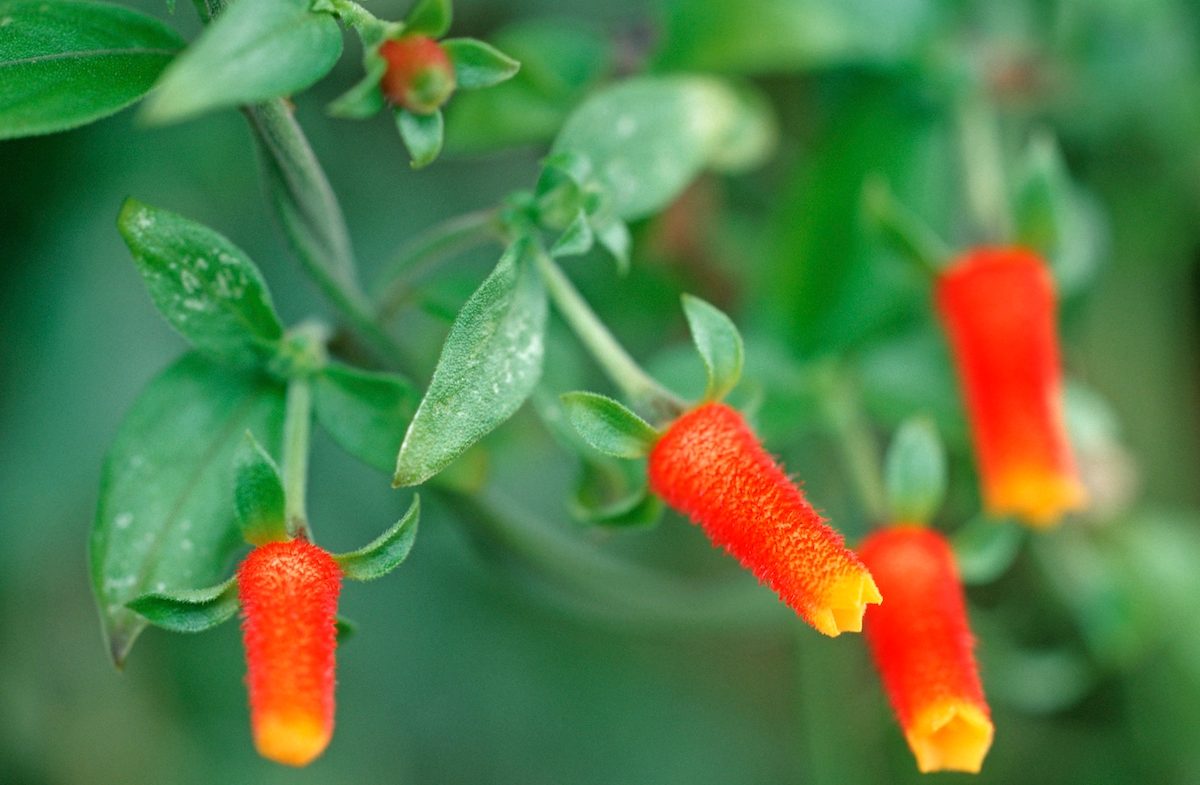Candy corn vine adds a pop of sugary color to any garden — and hummingbirds love it, too! Here's how to grow it in your yard.

Grow Candy Corn Vine as a Sweet Treat for Hummingbirds

On This Page
Candy Corn Vine Care and Growing Tips

- Scientific name: Manettia luteorubra
- Common name: Candy corn vine
- Growing zones: 10 to 11, annual elsewhere
- Soil: Well-draining
- Light needs: Full to part sun
- Attracts: Bees, butterflies, hummingbirds
Candy corn vine is easy enough to grow for a beginning gardener — and even for a gardener with decades of experience, it offers plenty of interest. Plant it in full sun to partial shade, and water it evenly. Fertilize the vine during the growing season as needed.
This brightly colored vine usually reaches widths of between 18 and 24 inches, and heights of between 6 and 12 feet. Gardeners with smaller trellises will need to trim it back, as will those who opt to grow this plant in a container. Typically, this vine boasts the orange and red blooms for which it’s named throughout spring and summer.
In winter, gardeners can either move the plant inside, or grow it as an annual.
Bird, Butterfly and Bee Benefits

This vine isn’t just eye-catching to humans: it’s a hummingbird favorite. Many gardeners plant it specifically for its hummingbird benefits, as their favorite flying jewels flit around the flowers that bloom throughout summer. Butterflies and bumblebees also visit this plant, which makes it an ideal pick for a pollinator garden.
Hummingbirds also love these vines to grow in your garden.
Pest or Disease Problems
Candy corn vine typically doesn’t suffer from disease or pest issues. Aphids will sometimes take up residence on the leaves, but a good blast of water usually washes them away. Mealybugs can also be a problem.
Some gardeners report issues with brown leaves on candy corn vine. In those situations, gardening expert Melinda Myers recommends monitoring watering habits for the plant and ensuring the plant isn’t getting too much, or not enough, water. In addition, she encourages gardeners only to fertilize the plant if it seems to need a nutrient boost.
Next, learn why vermillionaire firecracker plant is beloved by pollinators and hummingbirds.
Sources
- Gardening Know How, “Growing Candy Corn Vines“
- Melinda Myers, “Struggling Candy Corn Vine“




















